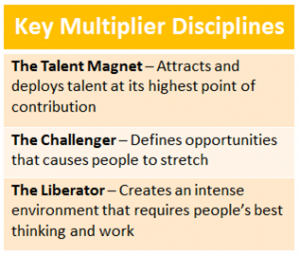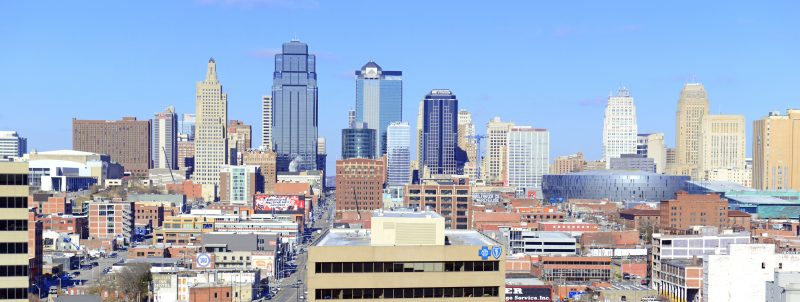Municipalities across the United States are utilizing advances in technology to make their cities smarter.
A smart city is a municipality that uses information and communication technologies to increase operational efficiency, share information with the public, and improve both the quality of government services and citizen welfare.
Over the last six months of researching how governments innovate, I discovered two models for facilitating government innovation. One model is establishing a group dedicated to experimenting and piloting new ideas, such as the New Urban Mechanics and the NC Innovation Center. These groups have dedicated staff to work with other departments and execute innovative programs.
By contrast, the second model takes a different approach where they use smaller teams to provide guidance, support and connections (to either people or data/technology or both), which allow other departments to be more innovative. Under this model, existing teams are brought together to execute programs.
Recently, I had the opportunity to speak with Bob Bennett, the Kansas City Chief Information Officer, about leading the smart city evolution. Bob is basically a group of one when it comes to driving innovation in Kansas City and falls under this second model. You can read more about Bob and his accomplishments here.
Both models have shown success to date and, although their structures are dissimilar, their leadership approach is similar – one that fosters an atmosphere of curiosity and experimentation.
 As a result of her extensive Multipliers leadership research, Liz Wiseman has uncovered that teams identify and try innovative ideas when their natural curiosity is engaged and they are provided with a defined space for experimentation (basically they are challenged to use their brains).
As a result of her extensive Multipliers leadership research, Liz Wiseman has uncovered that teams identify and try innovative ideas when their natural curiosity is engaged and they are provided with a defined space for experimentation (basically they are challenged to use their brains).
Multipliers invoke each person’s unique intelligence and create an atmosphere of genius—innovation, productive effort and collective intelligence. These Multipliers demonstrate three of the Multiplier disciplines: Talent Magnet, Challenger and Liberator.
Bob’s experiences coupled with our Multipliers research findings illustrate three steps that government leaders can take to drive innovation in support of developing smarter cities.
Look for Talent Everywhere (Talent Magnet)
Don’t go it alone. Smart cities are in their infancy. As a result, no one person is an expert in all facets of this emerging area. Governments needs to look everywhere for talent that can help. As Bob noted, “City government is part of an ecosystem, it can facilitate but it cannot control.” Government leaders need to tap into talent both internal and external to the organization.
Internal – Because the smart city concept is a relatively young space and the financial restrictions present in most city governments, it is important to look for talent that already exists within the organization. Think about what talent is needed to start and mature your smart city approach. Keep in mind that data is the key to driving a smart city.
Bob is a self-proclaimed data guy, he loves cumulating data sets and establishing key performance indicators (KPIs). How can you find people already in your organization who have a native genius and passion for data? One way is to look at how they have already demonstrated an interest in using data to benefit their work.
Currently if you look at Bob’s current LinkedIn profile photo, you will see him alongside a World Series trophy. Bob is a passionate baseball fan. Although he is a Cubs fan, the trophy is from the KC Royals’ 2015 championship. Baseball is probably the most data-rich sport in the world. Are there ways that people in your organizations have shown a passion for data – in their work or in their personal life? Talent magnets look for these types of connections in their hunt to find untapped talent.
External – Many entities exist in the city ecosystem, including corporations, non-profit organizations and citizens. In recent blogs, I have shared examples of many government organizations partnering with external groups. In the case of Kansas City, I discovered more of the same, as they have established innovative partnerships with the public and are currently teamed up with Avis on a connected car pilot, which has shown promising results to date.
Consider – Where would you look for untapped resources that could help on your project?
Spark Curiosity with Big Questions (Challenger)
Big ideas originate from big questions. These big questions cause “internal disruption,” which Bob sees as a main goal of his position as CIO. Liz Wiseman thinks of these as challenge questions – ones that challenge current assumptions that we or our organizations hold. These types of questions spark curiosity, and, as a result, teams think differently – often conducting research, which leads to new learning and growth.
Currently there is not one accepted definition of a smart city. Bob uses this to his advantage by asking “What does it mean to be a smart city?” The genius in this question is that it gives others the freedom to think in totally new directions by not putting a box around how a smart city is defined. This simple question gets people thinking.
To ignite further motivation he will tie more targeted questions to pubic outcomes which help motivate government teams. He believes the Kansas City employees are purpose-driven people who want to do well for themselves while doing good for their community.
With the mindset that government workers want to make their communities better, Bob asks questions such as, “What is the relationship between public works and crime?” This opens up ideas that reducing crime is a challenge for all departments across the city – not just within the police department. You can see how these types of questions drive collaboration across departments and move people out of their silos.
So, what sparks Bob’s passion in making Kansas City the smartest city on the planet in 5 years? The answer is simple and starts at home. As his daughter and all the younger people in Kansas City grow up, he wants to help make Kansas City a place they want to remain.
Consider – What big, disruptive questions should you be asking to drive innovation?
Create Safety (Liberator)
Teams and individuals who feel safe to try new things will do so. By the nature of his office, Bob creates safety. His office was established to drive innovation. When he works with other city departments he provides cover – because sometimes innovation is messy. As he says, “If we make a mess of something in the process of innovation, it is okay.”
Working with Bob’s group has been clearly defined as a place for experimentation. When his Innovation Office is involved in a project it changes perceptions and opens up new approaches and ideas. Innovation does not happen without taking risks and making mistakes along the way. Leaders need to carve out areas for teams to explore or “make space for mistakes.”
Organizational safety in the public sector is also created by starting small with designated test areas and timeframes. Bob uses these short test cycles to “evaluate success and estimate scale” for a potential city-wide program or solution.
Consider – In what areas can your teams experiment and take risks? How would you communicate these areas to your team?
As a government leader, when planning for smarter cities or driving any type of innovation, it is essential to create an atmosphere that fosters new ways of thinking. You can start by tapping into all the talent and intelligence around you, asking the disruptive questions that challenge thinking, and then create a safety zone for experimentation.
What other tips would you add?




It’s really interesting to see how innovations within the realm of government can help shape a city in its entirety and redefine it in a way that helps citizens get happier.
I agree, the opportunities to better serve citizens are endless!
Thanks for the extremely interesting article, Jon. Excited to see you speak at the NextGen Summit!